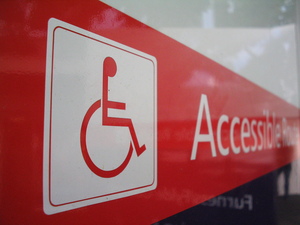Life is strange and throws you curve balls. Now that I have figured out how to best teach autistic children, I now find myself in a different classroom. This time, I have a triple challenge. My students are profoundly mentally challenged. In addition, several of my students are blind. As if teaching profound students wasn’t challenging enough, now we throw visual problems into the mix. However, being the creative person that I am, I have come up with some strategies that can be implemented both at school or at home when working with a visually impaired or blind student. I have already implemented some of these in my new classroom and they have seemed to help the students.
1) Use names when calling on children rather than visual cues. We use the children’s picture to take the morning roll during morning meeting. Each child holds his picture and when we call his name, he hands the picture to us. However, with the visually impaired students, we record their name on a recording device, or a big button communication device. The child presses the device and it greets them for the day. They seem to love this.
2) With the level children that I have, I have found it difficult to find lesson plans to help assist them. My children will never learn to read braille, but what do I do trying to teach simple letters , numbers, and shapes? I have merely ran off templates of the number, shape or letter and punched holes to outline the letters , shapes or numbers with a braille stylus. This works well, as I take the student’s hand and run it over the template.
3) Place the blind student near the front where the teacher is. All of my students are in wheel chairs or some type of physical therapy positioning device, so the children with visual impairment are placed right near me so they can hear. Simple repositioning is all it took. I also frequently call the visually impaired or blind students name to keep them focused and also so they will know that they are part of the lesson plan.
4) When studying lessons, always try to use an actual physical object. For example, we are studying the letter A, so I brought in an apple. I let each of my blind students hold the apple as I said the letter a sound. They became very quiet, feeling the shape of the apple.
5) Outline the letters, shapes, or numbers to students can feel the letter, shape or number. For example, when studying the circle, we placed glue around a very large template of a circle. A box top lid was used and the paper was placed in the box. Rice was placed in the lid and the student was assisted in rolling the paper around so the rice would be evenly distributed around the circle outline. At the end of the day, while we were closing the day with the P.M. meeting each student was allowed to follow the rice outline of the circle with their finger with the help of a para professional or myself.
Teaching any group of students is a real challenge, but this new classroom will be an even larger challenge. All students are profoundly mentally challenged, some are blind, two are partially deaf, and all are physically challenged also. But I have never been one to shy away from challenges. Hopefully some of these tips and strategies for working with the visually impaired or blind students will be helpful to others working with these wonderful students.
Reference:
- Experience



